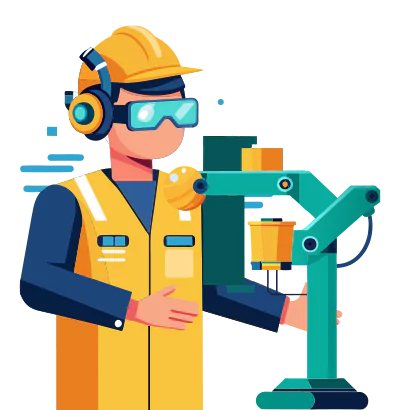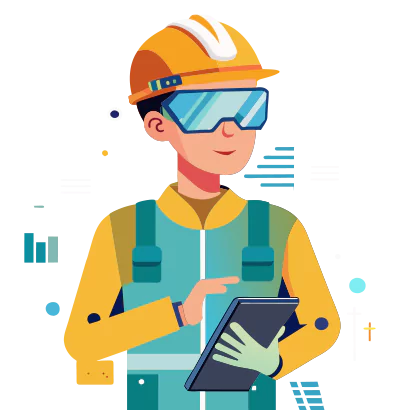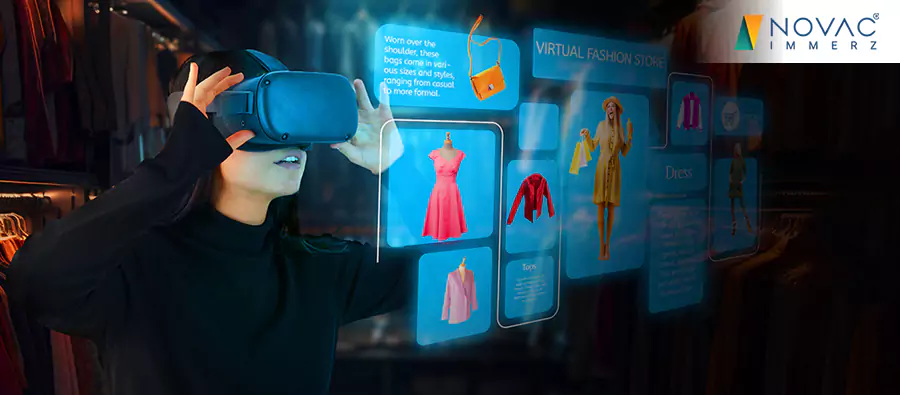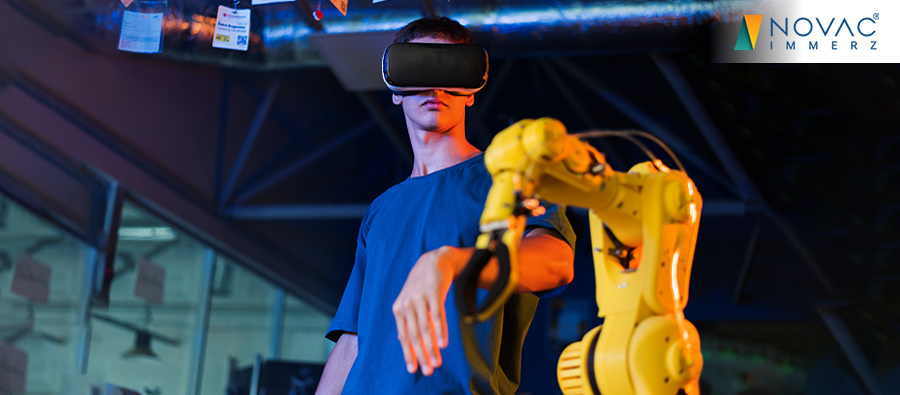Overview
Shortage of skilled labour is a serious issue affecting the manufacturing industry. Hence, a cost-effective training solution is needed to address the skills gap. Novac Immerz offers customized AR VR in workforce training solutions for manufacturing. Our engaging simulations can upgrade employee efficiency, optimize workforce performance, and enhance the skill levels of all staff involved in the production process.
Did you know that the value of AR in Manufacturing is expected to surpass $50 billion in 2025 and will double to $110 billion by 2030. - McKinsey & Company
Advantages of Using AR VR in the Manufacturing Industry
- Prevention of Industrial Accidents
Our Virtual Reality solutions can improve workplace safety by averting production line injuries. Real-time sharing of hazard warnings to employees will help them visualize the consequences of not following safety rules. Virtual Reality will offer a guided walkthrough of jobs by emulating different conditions. Simulating hazardous scenarios will enable workers to practice safety procedures and protocols in a controlled environment.
- Remote Training Opportunities
Workers can connect with experts via AR headsets while performing complex tasks. Access to hands-on training will enable employees to adapt to the ever-evolving manufacturing world. Virtual instructions are shared with workers after they enter the factory floor. By operating in a simulated environment, they can grasp the intricacies of the manufacturing process irrespective of their location.
Virtual Reality can collect vast volumes of data from sensors. It helps accurately predict when equipment and machines run out of order. Eventually, manufacturers can decrease production downtime, save repair costs, and increase operational efficiency.
Virtual Reality can alert workers whenever machines experience points of failure. Subsequently, it shares instructions about safety procedures and steps to replace the machine and remove the engine.
Virtual Reality can be used to design 3D samples of products. It helps manufacturers reduce the time to market (TTM) as prototypes can be rapidly developed in a virtual environment. Further, product changes can be made via real-time manipulation.
Product designers can test models in different contexts identical to real-world scenarios. Apart from saving time, integrating Virtual Reality with the design and modelling process will improve the quality of the final product. Manufacturers can also reduce their costs on customer service and repairs by designing better products.
From the perspective of product development, Virtual Reality assists in refining and enhancing designs. Animated simulations determine how products are used over time. Accordingly, components can be designed with ergonomics in mind.
- Streamline the Assembly Process
AR glasses can guide workers stepwise through all the assembly tasks. Our
Augmented Reality solutions can make on-the-job training more cost-effective.
With a mix of graphics, text, and video, cameras and sensors can showcase how parts are assembled. Thus, workers will receive real-time feedback during equipment installations and machine repairs.
- Factory Layout Planning (FLP)
Our Virtual Reality solutions can also be used for factory floor planning. It can simplify the placement of equipment, tools, and personnel. Virtual plants will test production flows. Plant managers can simulate assembly line configurations by immersing workers in a factory-like environment. Later, changes can be made in the physical world before workers perform their daily tasks.
A Glimpse of Our AR VR Solutions for Workforce Training
- Design and Prototype Solutions
Generally, manufacturers incur significant costs as part of the product lifecycle. Our Augmented Reality solutions save engineers valuable time during product development and implementation. They can collaborate virtually during prototype building, and photorealistic 3D models help share work instructions interactively.
- Assembly Line Operations and Maintenance Solutions
Virtual Reality can simulate the assembly process by designing a virtual line. Hence, new workers can gain first-hand experience while mounting and unmounting heavy equipment. Operators who assemble complex machines will get access to real-time instructions (animations and 3D images).
Augmented Reality will help speed up the maintenance process by detecting mechanical defects. Technicians can wear AR glasses and perform preventive maintenance with guiding tips and videos.
- HSE & Emergency Response Training Solutions
The role of AR and VR in manufacturing workforce training also applies to creating realistic scenarios. They enhance workers' emergency management capabilities by making them mission-ready. Technicians will be trained in threat identification, evacuation procedures, responding to incident command systems, and rescue management.
Augmented Reality will optimize the maintenance process. Technicians can use immersive simulators and learn to repair sensitive machinery without going to the field. They will receive specialized assistance from experts during troubleshooting. AR also facilitates corrective maintenance by maintaining a detailed record of incidents. This will ensure that machines do not fail during unexpected situations.
Final Thoughts
AR VR in manufacturing industry will help production firms future-proof their workforce. With new jobs expected to be created, upskilling workers will help them overcome the challenge of talent deficit. Immersive technologies will democratize knowledge sharing, improve operational performance, and guide workers through complex tasks.
Do you want to experience the advantage of our immersive training solutions? Connect with Novac Immerz now.

Pradeep, Vice President

Pradeep heads Novac Learning, the digital learning vertical of Novac Technology Solutions Pvt. Ltd., where he drives innovation in training methodologies. Under his guidance, Novac Learning supports organisations in seamlessly transitioning from traditional to digital training formats by implementing cutting-edge Learning Management Systems. Pradeep also leads the immersive technology solutions division at Novac Immerz, where his team crafts immersive experiences for training and marketing purposes.











